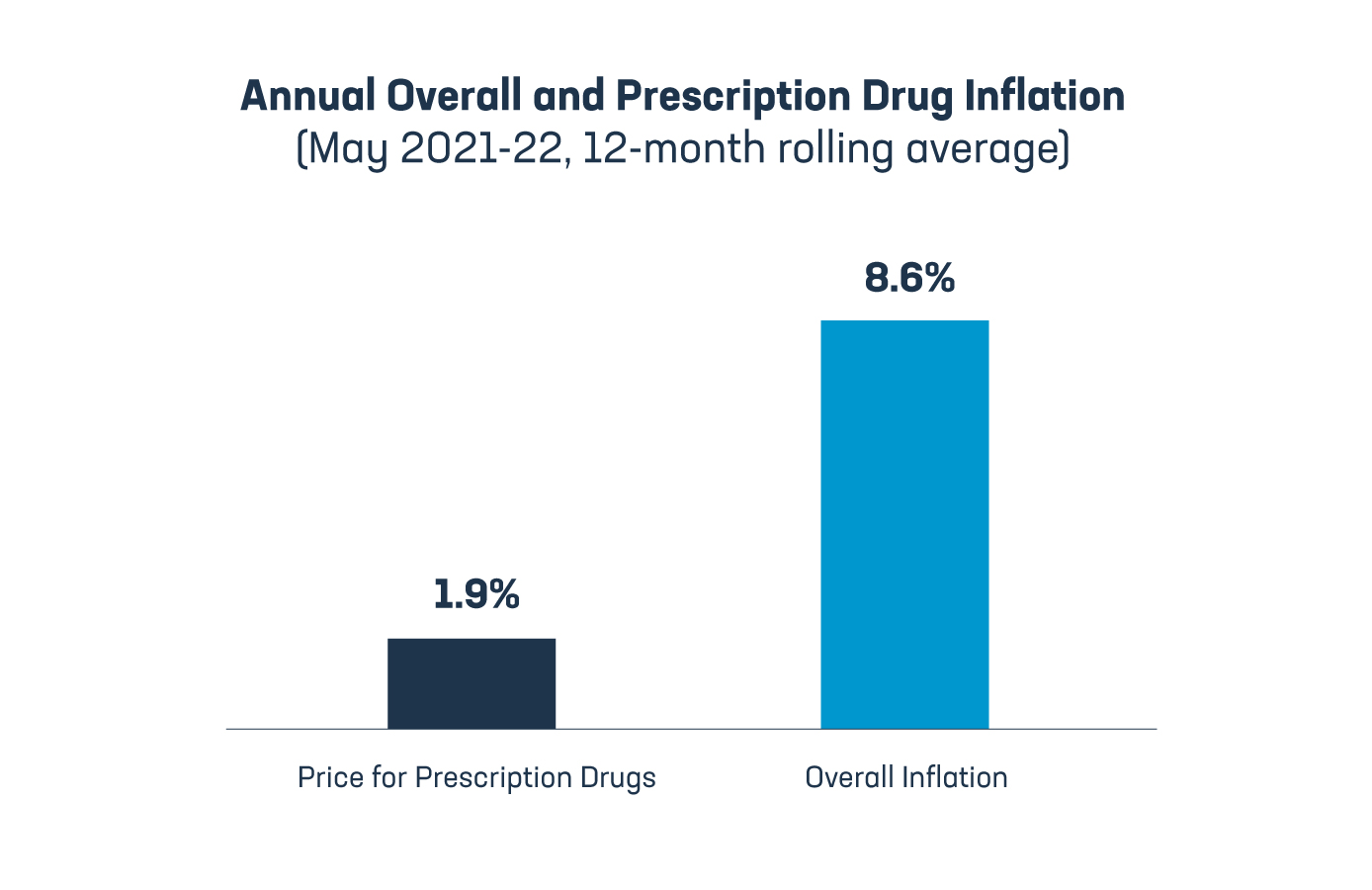Prescription drug prices are not fueling inflation
Let’s stick to the facts and drive toward solutions that address the real challenges patients are experiencing.

Prescription drug prices are not fueling inflation.
Let’s stick to the facts and drive toward solutions that address the real challenges patients are experiencing.

Prescription drug prices are not fueling inflation.
Inflation is causing pain for people across the country. As policymakers search for ways to help provide relief, some are erroneously tying inflation to prescription medicines. To make matters worse, this false premise is being used to build support for harmful policies.
Take for example the director of the National Economic Council, Brian Deese. After noting in a recent interview that “prices are unacceptably high,” Mr. Deese went on to call for government price controls to lower the cost of prescription drugs.
We also believe it’s important to make medicines affordable for patients, but let’s get a few facts straight.
Fact #1. Prescription drugs are NOT fueling inflation. Don’t take our word for it. The administration's own economic data show that’s the case. According to the Bureau of Labor Statistics, since May 2021, overall inflation surged by 8.6% while prices for medicines grew less than 2% even before accounting for discounts that insurers receive.

When these discounts are considered, the amount that health plans and others pay for medicines has grown even less. According to IQVIA, after factoring in billions of dollars in rebates and discounts, net prices for brand medicines increased on average just 1% last year and they’re expected to decline or stay flat over the next five years.
Fact #2: Abusive insurance practices drive up costs for patients. Even though medicines aren’t fueling inflation, there are still patients who struggle to afford their treatments. But their challenges largely stem from a broken insurance system that can lead patients to pay more for medicines than their insurance company.
Total rebates, discounts, and other payments from drug makers have more than tripled over the last decade and now exceed $200 billion. Yet health plans and pharmacy benefit managers (PBMs) often don’t share the savings they receive with patients at the pharmacy. Instead, patients with a deductible are forced to pay the full price of a medicine, while their health plan pockets the rebate.
Perhaps that helps explain why a recent survey found the top health care issue of voters is health insurance costs and coverage, with 58% who are concerned about their ability to afford their out-of-pocket health care costs and roughly 80% expressing support for requiring middlemen like insurance companies and PBMs to share the savings with patients.
Fact #3: Government price setting will NOT solve the real affordability challenges patients face. The current system isn’t fair for patients, but government price setting isn’t the answer. Instead, so-called Medicare “negotiation” would add a layer of government interference onto a system that too often benefits middlemen at patients’ expense. In short, government price setting would make a broken system worse, while at the same time jeopardizing future cures and treatments and risking patients’ access to life saving medicines. And here’s one final fact: there is a better way to help lower drug costs for patients, while preserving choice, access and future innovation.
Let’s stick to the facts and drive toward solutions that address the real challenges patients are experiencing.